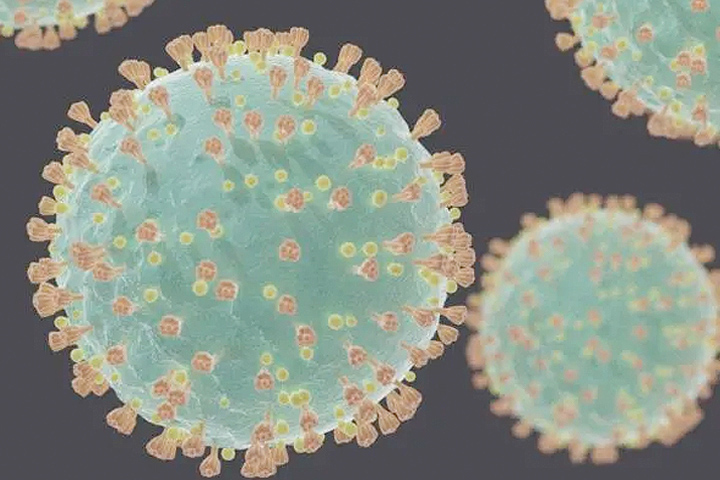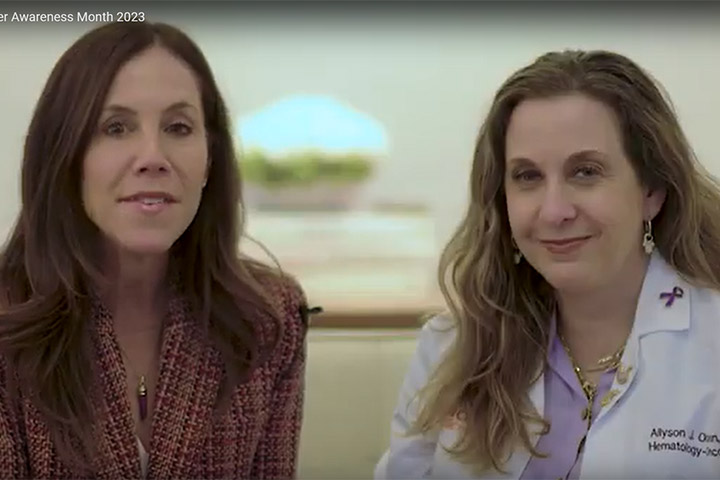How COVID-19 Is Transmitted: The Latest Information

Although it may seem the COVID-19 pandemic is slowing, with more people socializing at newly-opened restaurants, bars, and amusement parks, the threat of catching the novel coronavirus still exists.
That’s why it’s important to keep yourself in the know about the latest research and information about how this virus is transmitted. Although you may think you already know how COVID-19 spreads and how to minimize your risk, here’s a refresher—with some of the latest research as well as new information about how you can keep yourself safe.
How Does Coronavirus Spread?
The single most important thing to know is that COVID-19 spreads mainly from person to person in the air, according to the CDC. So close contact like talking to a family member, groups of friends, even the local store clerk, can put you at risk. That’s because people expel a lot of air if they cough, sneeze, or are even just talking loudly. If you are in close contact with an infected person, the air they expel contains droplets that are infected with COVID-19. You may inhale those droplets or they could potentially land in your mouth. Experts say these viral droplets can hang in the air, but gravity makes them fall to the ground quickly.
Someone with coronavirus—even those folks who never show symptoms—can also emit tiny infectious viral particles called aerosols. These aerosols, which are more numerous than droplets, can drift through the air for up to about three hours, according to a study published by the National Institute of Allergy and Infectious Diseases’ Laboratory of Virology. Take a walk down a store aisle where infected aerosols are present and you could become infected with the coronavirus.
What About Surfaces Like Doorknobs?
The coronavirus can also spread by contact with contaminated surfaces. But, according to the CDC, surfaces are not a major route of transmission. (That doesn’t mean you should stop disinfecting, though.) The prevailing thought is that if you touch a contaminated surface and then touch your mouth, nose, or eyes, risk increases. For example, plastic and stainless steel seem to be a hot spot for the virus since its survival on these surfaces can last two to three days—in perfect, controlled conditions. On cardboard, in those same, perfect conditions, it may survive only about 24 hours. The reason surfaces are less of a risk than person-to-person contact is that the virus no longer has a living host and it begins to degrade within hours. This makes any remaining virus a lot less potent than those aerosols or droplets from person-to-person contact.
Can I Get the Virus From My Pet?
When it comes to pets, the risks of Fido or Fluffy spreading the disease to you is low, according to the FDA. But it seems that if you are infected, you can spread it to your cat or dog in some circumstances. That’s why the CDC recommends limiting contact with animals if you have been diagnosed with the virus or believe you may be sick, but have not been tested.
Other Modes of Virus Transmission
You may have seen reports on social media or the news about the coronavirus being transmitted from fecal matter. Researchers have found COVID-19 in the stool of infected patients. A study in the journal Emerging Infectious Diseases shows the virus taken from an infected patient can actually infect cells. But those are cells in a petri dish. More research is needed to actually prove this is a significant way the disease can be transmitted to humans. If scientists discover this fecal mode of transmission can affect humans, COVID-19 would join the ranks of other diseases like cholera and diarrhea, among others, that can infect people in this manner. But whether this a significant mode of transmission is unknown at this time.
The Latest Information
The very latest studies show that, on average, the time from a person being exposed to the time that person shows symptoms is only about five to six days. Other research shows that it can be as little as three days after exposure to as much as almost two weeks before symptoms. That’s why experts say that it’s a good idea to assume that everyone is infected, and those individuals who know they have been exposed should self-quarantine for about 14 days.
One of the biggest concerns about COVID-19 transmission has been the role of people with the virus who are asymptomatic. For most of the pandemic the thought has been that these people are one of the larger sources of infection. The early information from contact tracing cited in a WHO report has not provided any further clarification. Part of the problem is that many people who consider themselves asymptomatic may be presymptomatic (have not yet developed the illness) or may actually have an extemely mild case of COVID-19. As of early June 2020, public health experts in the US remain convinced that asymptomatic spread is a significant source of infection.
Lowering Risk
The most important message about lowering risk has not changed. Wash your hands frequently and stand about six feet (or more) apart from people. Masks may be with us for the long haul, and although a fabric covering protects people from you, and it’s a physical reminder not to touch your face, it isn’t a magic shield protecting you from them.
But those homemade or commercially made fabric masks may offer a little more protection than previously thought. A recent meta-analysis from WHO that looked at some 200 COVID-19 studies throughout the world, and included some 25,000 patients, showed that N95 respirator masks, surgical masks, and face shields protect against infection. These types of protective equipment also led to a “ much lower risk of infection,” according to the study. Indirect evidence suggested that homemade fabric masks and even the lowly bandana, also offered some protection, but not to the degree of medical-grade equipment.






